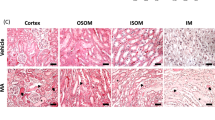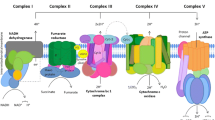Abstract
Mitochondrial dysfunction is a fundamental mechanism leading to drug nephrotoxicity, such as gentamicin-induced nephrotoxicity. Mitochondrial therapy (mitotherapy) or exogenous mitochondria transplantation is a method that can be used to replace dysfunctional mitochondria with healthy mitochondria. This method can help in the treatment of diseases related to mitochondria. In this research, we studied the transplantation effect of freshly isolated mitochondria on the toxicity induced by gentamicin on renal proximal tubular cells (RPTCs). Furthermore, possible gender-related effects on supplying exogenous rat kidney mitochondria on gentamicin-induced RPTCs were investigated. At first, the normality and proper functioning of fresh mitochondria were assessed by measuring mitochondrial succinate dehydrogenase activity (SDH) and changes in mitochondrial membrane potential (MMP). Then, the protective effects of mitochondrial transplantation against gentamicin-induced mitochondrial toxicity were evaluated through parameters including lactate dehydrogenase (LDH) leakiness, reactive oxygen species (ROS) production, lipid peroxidation (LPO) content, reduced glutathione (GSH) level, extracellular oxidized glutathione (GSSG) level, ATP level, MMP collapse, and caspase-3 activity. According to the statistical analysis, transplanting the healthy mitochondria decreased the cytotoxicity, ROS production, MMP collapse, LPO content, GSSG levels, and caspase-3 activity caused by gentamicin in RPTCs. Also, it has caused an increase in the level of ATP and GSH in the RPTCs. Furthermore, higher preventive effects were observed for the female group. According to the current study, mitochondrial transplantation is a potent therapeutic method in xenobiotic-caused nephrotoxicity.







Similar content being viewed by others
References
Andersson BS, Aw TY, Jones DP (1987) Mitochondrial transmembrane potential and pH gradient during anoxia. Am J Physiol 252(4 Pt 1):C349-355
Ansari MY, Ball HC, Wase SJ, Novak K, Haqqi TM (2021) Lysosomal dysfunction in osteoarthritis and aged cartilage triggers apoptosis in chondrocytes through BAX mediated release of cytochrome c. Osteoarthritis Cartilage 29(1):100–112
Baracca A, Sgarbi G, Solaini G, Lenaz G (2003) Rhodamine 123 as a probe of mitochondrial membrane potential: evaluation of proton flux through F(0) during ATP synthesis. Biochim Biophys Acta 1606(1–3):137–146
Beach DC, Giroux E (1992) Inhibition of lipid peroxidation promoted by iron(III) and ascorbate. Arch Biochem Biophys 297(2):258–264
Bereiter-Hahn J, Vöth M, Mai S, Jendrach M (2008) Structural implications of mitochondrial dynamics. Biotechnol J 3(6):765–780
Boom SP, Gribnau FW, Russel FG (1992) Organic cation transport and cationic drug interactions in freshly isolated proximal tubular cells of the rat. J Pharmacol Exp Ther 263(2):445–450
Bradford MM (1976) A rapid and sensitive method for the quantitation of microgram quantities of protein utilizing the principle of protein-dye binding. Anal Biochem 72:248–254
Demarest TG, McCarthy MM (2015) Sex differences in mitochondrial (dys)function: implications for neuroprotection. J Bioenerg Biomembr 47(1–2):173–188
Downes KJ, Hayes M, Fitzgerald JC, Pais GM, Liu J, Zane NR et al (2020) Mechanisms of antimicrobial-induced nephrotoxicity in children. J Antimicrob Chemother 75(1):1–13
Everse J, Reich RM, Kaplan NO, Finn WD (1975) New instrument for rapid determination of activities of lactate dehydrogenase isoenzymes. Clin Chem 21(9):1277–1281
Fujii F, Nodasaka Y, Nishimura G, Tamura M (2004) Anoxia induces matrix shrinkage accompanied by an increase in light scattering in isolated brain mitochondria. Brain Res 999(1):29–39
Gomzikova MO, James V, Rizvanov AA (2021) Mitochondria donation by mesenchymal stem cells: current understanding and mitochondria transplantation strategies. Front Cell Dev Biol 9:653322
Hernández-Cruz EY, Amador-Martínez I, Aranda-Rivera AK, Cruz-Gregorio A, PedrazaChaverri J (2022) Renal damage induced by cadmium and its possible therapy by mitochondrial transplantation. Chem Biol Interact 36:1109961
Hissin PJ, Hilf R (1976) A fluorometric method for determination of oxidized and reduced glutathione in tissues. Anal Biochem 74(1):214–226
Hodiamont CJ, van den Broek AK, de Vroom SL, Prins JM, Mathôt RAA, van Hest RM (2022) Clinical pharmacokinetics of gentamicin in various patient populations and consequences for optimal dosing for gram-negative infections: an updated review. Clin Pharmacokinet 61(8):1075–1094
Hosseini MJ, Shaki F, Ghazi-Khansari M, Pourahmad J (2014) Toxicity of copper on isolated liver mitochondria: impairment at complexes I, II, and IV leads to increased ROS production. Cell Biochem Biophys 70(1):367–381
Hosseinian S, Ali Pour P, Kheradvar A (2022) Prospects of mitochondrial transplantation in clinical medicine: aspirations and challenges. Mitochondrion 65:33–44
Jabbari H, Roushandeh AM, Rostami MK, Razavi-Toosi MT, Shokrgozar MA, Jahanian-Najafabadi A et al (2020) Mitochondrial transplantation ameliorates ischemia/reperfusion-induced kidney injury in rat. Biochim Biophys Acta Mol Basis Dis 1866(8):165809
Justo R, Boada J, Frontera M, Oliver J, Bermúdez J, Gianotti M (2005) Gender dimorphism in rat liver mitochondrial oxidative metabolism and biogenesis. Am J Physiol Cell Physiol 289(2):C372-378
Konari N, Nagaishi K, Kikuchi S, Fujimiya M (2019) Mitochondria transfer from mesenchymal stem cells structurally and functionally repairs renal proximal tubular epithelial cells in diabetic nephropathy in vivo. Sci Rep 9(1):5184
Kubat GB, Ozler M, Ulger O, Ekinci O, Atalay O, Celik E et al (2021) The effects of mesenchymal stem cell mitochondrial transplantation on doxorubicin-mediated nephrotoxicity in rats. J Biochem Mol Toxicol 35(1):e22612
Lecoutre S, Clément K, Dugail I (2022) Obesity-related adipose tissue remodeling in the light of extracellular mitochondria transfer. Int J Mol Sci 23(2):632
Lundin A (2000) Use of firefly luciferase in ATP-related assays of biomass, enzymes, and metabolites. Methods Enzymol 305:346–370
Mahammad S, Parmryd I (2015) Cholesterol depletion using methyl-β-cyclodextrin. Methods in membrane lipids. Springer, pp 91–102
Meier O, Boucke K, Hammer SV, Keller S, Stidwill RP, Hemmi S et al (2002) Adenovirus triggers macropinocytosis and endosomal leakage together with its clathrin-mediated uptake. J Cell Biol 158(6):1119–1131
Morales-Alvarez MC (2020) Nephrotoxicity of antimicrobials and antibiotics. Adv Chronic Kidney Dis 27(1):31–37
Nascimento-Dos-Santos G, de-Souza-Ferreira E, Linden R, Galina A, Petrs-Silva H (2021) Mitotherapy: unraveling a promising treatment for disorders of the central nervous system and other systemic conditions. Cells 10(7):1827
O’Reilly M, Young L, Kirkwood NK, Richardson GP, Kros CJ, Moore AL (2019) Gentamicin affects the bioenergetics of isolated mitochondria and collapses the mitochondrial membrane potential in cochlear sensory hair cells. Front Cell Neurosci 13:416
Pan JS, Sheikh-Hamad D (2019) Mitochondrial dysfunction in acute kidney injury and sex-specific implications. Med Res Arch 7(2). https://doi.org/10.18103/mra.v7i2.1898
Popov LD (2021) One step forward: extracellular mitochondria transplantation. Cell Tissue Res 384(3):607–612
Pourahmad J, Eskandari MR, Shakibaei R, Kamalinejad M (2010) A search for hepatoprotective activity of aqueous extract of Rhus coriaria L. against oxidative stress cytotoxicity. Food Chem Toxicol 48(3):854–858
Pourahmad J, Mortada Y, Eskandari MR, Shahraki J (2011) Involvement of lysosomal labilisation and lysosomal/mitochondrial cross-talk in diclofenac induced hepatotoxicity. Iran J Pharm Res 10(4):877–887
Preble JM, Pacak CA, Kondo H, MacKay AA, Cowan DB, McCully JD (2014) Rapid isolation and purification of mitochondria for transplantation by tissue dissociation and differential filtration. J vis Exp. https://doi.org/10.3791/51682(91):e51682
Quiros Y, Vicente-Vicente L, Morales AI, López-Novoa JM, López-Hernández FJ (2011) An integrative overview on the mechanisms underlying the renal tubular cytotoxicity of gentamicin. Toxicol Sci 119(2):245–256
Randjelovic P, Veljkovic S, Stojiljkovic N, Sokolovic D, Ilic I (2017) Gentamicin nephrotoxicity in animals: current knowledge and future perspectives. Excli J 16:388–399
Rezaei M, Salimi A, Taghidust M, Naserzadeh P, Goudarzi G, Seydi E et al (2014) A comparison of toxicity mechanisms of dust storm particles collected in the southwest of Iran on lung and skin using isolated mitochondria. Toxicol Environ Chem 96(5):814–830
Rieder H, Decker K (1984) Phagocytosis of hepatocyte mitochondria by rat Kupffer cells in vitro. Hoppe Seylers Z Physiol Chem 365(2):175–184
Rodriguez-Cuenca S, Pujol E, Justo R, Frontera M, Oliver J, Gianotti M et al (2002) Sex-dependent thermogenesis, differences in mitochondrial morphology and function, and adrenergic response in brown adipose tissue. J Biol Chem 277(45):42958–42963
Sahu BD, Tatireddy S, Koneru M, Borkar RM, Kumar JM, Kuncha M et al (2014) Naringin ameliorates gentamicin-induced nephrotoxicity and associated mitochondrial dysfunction, apoptosis and inflammation in rats: possible mechanism of nephroprotection. Toxicol Appl Pharmacol 277(1):8–20
Sakahira H, Enari M, Nagata S (1998) Cleavage of CAD inhibitor in CAD activation and DNA degradation during apoptosis. Nature 391(6662):96–99
Schafer JA, Watkins ML, Li L, Herter P, Haxelmans S, Schlatter E (1997) A simplified method for isolation of large numbers of defined nephron segments. Am J Physiol 273(4):F650-657
Sepand MR, Ghahremani MH, Razavi-Azarkhiavi K, Aghsami M, Rajabi J, Keshavarz-Bahaghighat H et al (2016) Ellagic acid confers protection against gentamicin-induced oxidative damage, mitochondrial dysfunction and apoptosis-related nephrotoxicity. J Pharm Pharmacol 68(9):1222–1232
Servais H, Jossin Y, Van Bambeke F, Tulkens PM, Mingeot-Leclercq MP (2006) Gentamicin causes apoptosis at low concentrations in renal LLC-PK1 cells subjected to electroporation. Antimicrob Agents Chemother 50(4):1213–1221
Shaki F, Hosseini MJ, Ghazi-Khansari M, Pourahmad J (2012) Toxicity of depleted uranium on isolated rat kidney mitochondria. BiochimBiophys Acta 1820(12):1940–1950
Ulger O, Kubat GB (2022) Therapeutic applications of mitochondrial transplantation. Biochimie 195:1–15
Ulger O, Kubat GB, Cicek Z, Celik E, Atalay O, Suvay S et al (2021) The effects of mitochondrial transplantation in acetaminophen-induced liver toxicity in rats. Life Sci 279:119669
Ventura-Clapier R, Moulin M, Piquereau J, Lemaire C, Mericskay M, Veksler V et al (2017) Mitochondria: a central target for sex differences in pathologies. Clin Sci (lond) 131(9):803–822
Yu Z, Hou Y, Zhou W, Zhao Z, Liu Z, Fu A (2021) The effect of mitochondrial transplantation therapy from different gender on inhibiting cell proliferation of malignant melanoma. Int J Biol Sci 17(8):2021–2033
Acknowledgements
This research was supported by Shahid Beheshti University of Medical Sciences, Tehran, Iran.
Author information
Authors and Affiliations
Corresponding authors
Ethics declarations
Conflict of interest
The authors declare no competing interests.
Rights and permissions
Springer Nature or its licensor (e.g. a society or other partner) holds exclusive rights to this article under a publishing agreement with the author(s) or other rightsholder(s); author self-archiving of the accepted manuscript version of this article is solely governed by the terms of such publishing agreement and applicable law.
About this article
Cite this article
Arjmand, A., Shiranirad, S., Ameritorzani, F. et al. Mitochondrial transplantation against gentamicin-induced toxicity on rat renal proximal tubular cells: the higher activity of female rat mitochondria. In Vitro Cell.Dev.Biol.-Animal 59, 31–40 (2023). https://doi.org/10.1007/s11626-022-00743-1
Received:
Accepted:
Published:
Issue Date:
DOI: https://doi.org/10.1007/s11626-022-00743-1




